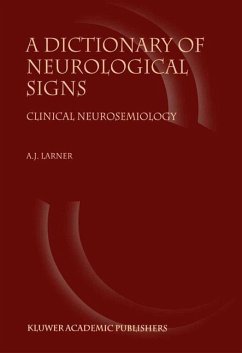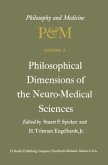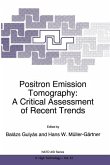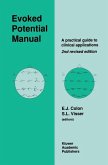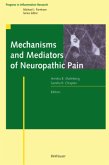Neurology has always been a discipline in which careful physical examination is paramount. The rich vocabulary of neurology replete with eponyms attests to this historically. The decline in the importance of the examination has long been predicted with the advent of more detailed neuroimaging. However, neuroimaging has often provided a surfeit of information from which salient features have to be identified, dependent upon the neurological examination. A dictionary of neurological signs has a secure future. A dictionary should be informative but unless it is unwieldy, it cannot be comprehensive, nor is that claimed here. Andrew Larner has decided sensibly to include key features of the history as well as the examination. There is no doubt that some features of the history can strike one with the force of a physical sign. There are entries for "palinopsia" and "environmental tilt" both of which can only be elicited from the history and yet which have considerable significance. There is also an entry for the "head turning sign" observed during the history taking itself as well as the majority of entries relating to details of the physical examination. This book is directed to students and will be valuable to medical students, trainee neurologists, and professions allied to medicine. Neurologists often speak in shorthand and so entries such as "absence" and "freezing" are sensible and helpful.
Hinweis: Dieser Artikel kann nur an eine deutsche Lieferadresse ausgeliefert werden.
Hinweis: Dieser Artikel kann nur an eine deutsche Lieferadresse ausgeliefert werden.
`...a great wealth of information has been amassed and collated and often complex topics distilled with consistent clarity. While partially concerned with objective physical signs, subjective symptoms of special anatomical of pathological significance are included, each has a semiological significance...The book's principal strength is its structured approach and the author's skill in achieving a succinct definition of each sign, a brief account of the clinical technique required for it to be elicited, a description of other neurological signs that may accompany the index sign and, where known, a brief account of its basis in terms of neuro-anatomy, pathophysiology, pharmacology and neuropathology.'
Brain, 126:2 (February 2003)
Brain, 126:2 (February 2003)
`...a great wealth of information has been amassed and collated and often complex topics distilled with consistent clarity. While partially concerned with objective physical signs, subjective symptoms of special anatomical of pathological significance are included, each has a semiological significance...The book's principal strength is its structured approach and the author's skill in achieving a succinct definition of each sign, a brief account of the clinical technique required for it to be elicited, a description of other neurological signs that may accompany the index sign and, where known, a brief account of its basis in terms of neuro-anatomy, pathophysiology, pharmacology and neuropathology.'
Brain, 126:2 (February 2003)
Brain, 126:2 (February 2003)

